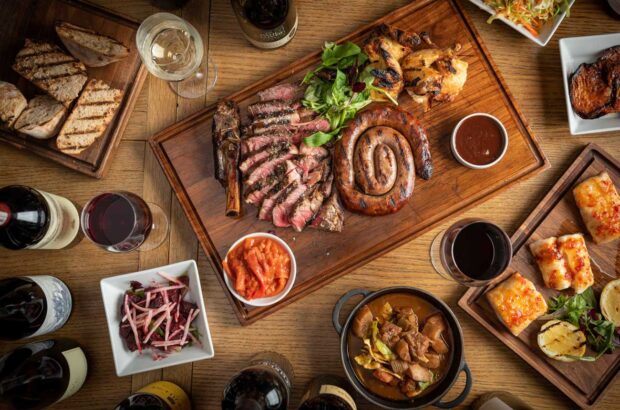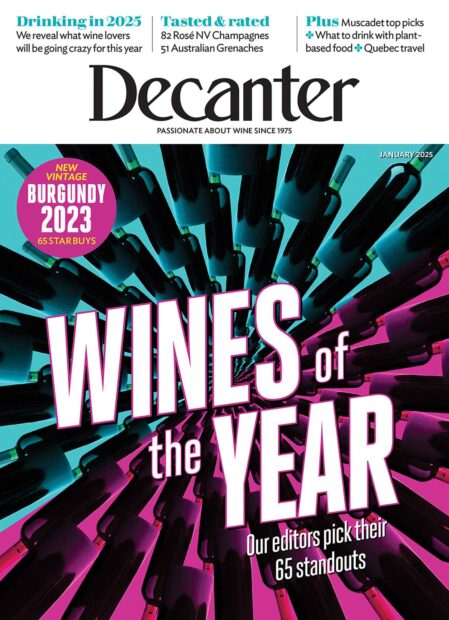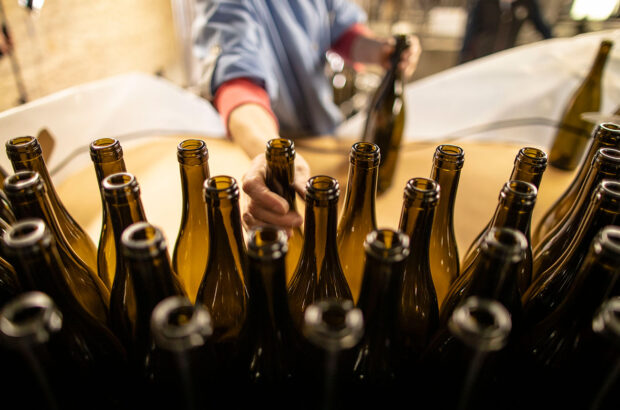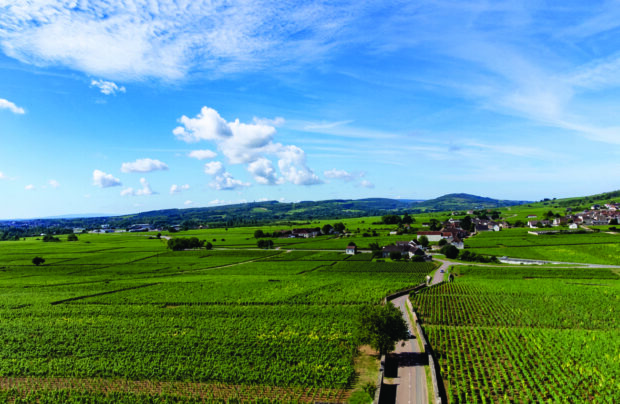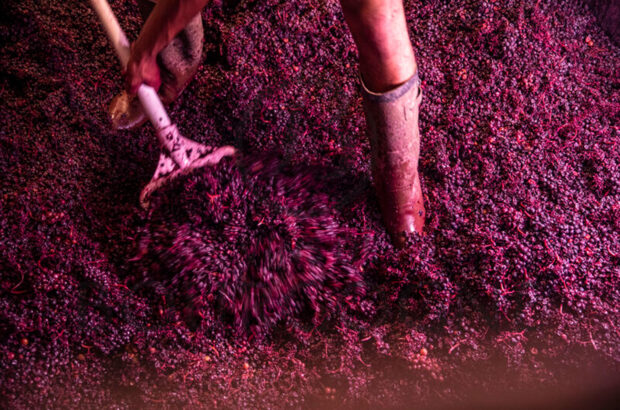The motivation for this piece was, at the outset, to document the evolution of the exciting projects that, over the last 20 years, have been carving out an ‘alternative’ face of Ribera del Duero. It quickly became apparent that the real story concerned the efforts of the producers behind these projects to save the region from socio-economic decline.
Throughout the 1950s and ’60s, Spanish people fled rural areas, creating what became known as España vacía (‘empty Spain’): large swathes of the country’s interior suffering from continued depopulation, and a decline in access to public services and infrastructure as a result.
Old vineyards and wineries were left behind, and with them, a winemaking tradition yielding wines that were restrained, fresh and pleasantly rustic. The exodus created opportunities for cooperatives and other big players to consolidate their presence. In Castilla y León in the country’s northwest, a bold new style of Ribera del Duero wines emerged, to great commercial success.
Seven modern examples of Ribera del Duero listed below
{"content":"PC9wPgo8aDI+QmFjayB0byB0aGUgc29pbDwvaDI+CjxwPlBhYmxvIEFycmFueiBhbmQgQW5kcmVhIFNhbnogKHBpY3R1cmVkIGJlbG93KSBvZiBNYWduYSBWaWRlcyBpbiBMYSBBZ3VpbGVyYSwgbm9ydGggb2YgTWFkcmlkLCBleHBsYWluIHRoYXQgdGhleSB3YW50ZWQgdG8gcmV0dXJuIGFuZCDigJhmaWxsIHRoZSBnYXAgY3JlYXRlZCBieSBvdXIgcGFyZW50c+KAmSBnZW5lcmF0aW9u4oCZLCB3aGlsZSBhbHNvIHByZXNlcnZpbmcgdGhlIGhlcml0YWdlIGxlZnQgYnkgdGhlaXIgZ3JhbmRwYXJlbnRzOiDigJhOb3Qgb25seSB0aGUgdmluZXlhcmRzIHdlIGluaGVyaXRlZCwgYnV0IGFsc28gdGhlIG1hZ2ljYWwgbWVtb3JpZXMg4oCTIGltYWdlcywgc21lbGxzIOKAkyBvZiBob3cgdGhleSBtYWRlIHRoZSB3aW5lcy7igJk8L3A+CjxwPjxkaXYgY2xhc3M9ImFkLWNvbnRhaW5lciBhZC1jb250YWluZXItLW1vYmlsZSI+PGRpdiBpZD0icG9zdC1pbmxpbmUtMiIgY2xhc3M9ImlwYy1hZHZlcnQiPjwvZGl2PjwvZGl2PjwvcD4KPHA+U2ltaWxhciBmZWVsaW5ncyBtb3RpdmF0ZWQgSm9yZ2UgTW9uesOzbiBvZiBuZWFyYnkgRG9taW5pbyBkZWwgQWd1aWxhIHRvIHJldHVybiB0byBSaWJlcmEgZm9sbG93aW5nIGVkdWNhdGlvbiBpbiBNYWRyaWQsIEJvcmRlYXV4IGFuZCAoY3J1Y2lhbGx5KSBCdXJndW5keTog4oCYSSB3YW50ZWQgdG8gZHJpbmsgZnJvbSB0aGUgc291cmNlLCBiZWZvcmUgaW5kdXN0cmlhbCB3aW5lbWFraW5nIGJlY2FtZSBkb21pbmFudC7igJk8L3A+CjxwPkZvciB0aGVzZSBzbWFsbCBwcm9qZWN0cyB0aGF0IGVtZXJnZWQgYXQgdGhlIGRhd24gb2YgdGhlIDIxc3QgY2VudHVyeSwgYSBzdHlsaXN0aWMgZGVwYXJ0dXJlIGZyb20gdGhlIG1vZGVybiwgbXVzY3VsYXIgc3R5bGUgb2YgUmliZXJhIGRlbCBEdWVybyB3YXMgYXMgbXVjaCBhIGNob2ljZSBhcyBhbiBpbmV2aXRhYmlsaXR5LjwvcD4KPHA+V29ya2luZyBtYWlubHkgd2l0aCBvbGQgZmllbGQgYmxlbmRzIChBcnJhbnogYW5kIFNhbnogaGF2ZSBzbyBmYXIgaWRlbnRpZmllZCAyMCB2YXJpZXRpZXMgaW4gdGhlaXIgQWd1aWxlcmEgdmluZXlhcmRzKSwgdGhlaXIgd2luZXMgYXJlIGluaGVyZW50bHkgZGlmZmVyZW50IHRvIHRoZSBUaW50byBGaW5vLWRvbWluYW50IHdpbmVzIHRoYXQgY29uc3VtZXJzIGtub3cgYXMgUmliZXJhIGRlbCBEdWVybyB0b2RheS4gSW4gMjAyMywgdGhlIGZsYWdzaGlwIDxhIGhyZWY9Imh0dHBzOi8vd3d3LmRlY2FudGVyLmNvbS93aW5lL2dyYXBlLXZhcmlldGllcy90ZW1wcmFuaWxsby10aW50by1maW5vLyIgdGFyZ2V0PSJfYmxhbmsiIHJlbD0ibm9vcGVuZXIiPjxzdHJvbmc+VGludG8gRmlubzwvc3Ryb25nPjwvYT4gKFRlbXByYW5pbGxvIGJ5IGl0cyBsb2NhbCBuYW1lKSByZXByZXNlbnRlZCA5Ny40JSBvZiB0aGUgcmVnaW9u4oCZcyBwcm9kdWN0aW9uLCBhY2NvcmRpbmcgdG8gYW5udWFsIGRhdGEgZnJvbSB0aGUgcmVnaW9u4oCZcyA8ZW0+Y29uc2VqbyByZWd1bGFkb3I8L2VtPi48L3A+CjxkaXYgY2xhc3M9ImFkLWNvbnRhaW5lciBhZC1jb250YWluZXItLW1vYmlsZSI+PGRpdiBpZD0icG9zdC1pbmxpbmUtMyIgY2xhc3M9ImlwYy1hZHZlcnQiPjwvZGl2PjwvZGl2Pgo8ZGl2IGlkPSJhdHRhY2htZW50XzUzODE4NyIgc3R5bGU9IndpZHRoOiAzMTBweCIgY2xhc3M9IndwLWNhcHRpb24gYWxpZ25ub25lIj48aW1nIGZldGNocHJpb3JpdHk9ImhpZ2giIGRlY29kaW5nPSJhc3luYyIgYXJpYS1kZXNjcmliZWRieT0iY2FwdGlvbi1hdHRhY2htZW50LTUzODE4NyIgY2xhc3M9Imxhenlsb2FkIGJsdXItdXAgc2l6ZS1tZWRpdW0gd3AtaW1hZ2UtNTM4MTg3IiBkYXRhLXByb2Nlc3NlZCBzcmM9Imh0dHBzOi8vd3d3LmRlY2FudGVyLmNvbS93cC1jb250ZW50L3RoZW1lcy9zaW1iYS10aGVtZS9hc3NldHMvaW1hZ2VzL3BsYWNlaG9sZGVyLnBuZyIgZGF0YS1zcmM9Imh0dHBzOi8va2V5YXNzZXRzLnRpbWVpbmN1ay5uZXQvaW5zcGlyZXdwL2xpdmUvd3AtY29udGVudC91cGxvYWRzL3NpdGVzLzM0LzIwMjQvMDkvREVDMzAyLnJpYmVyYV9kZWxfZHVlcm8ucGFibG9fYXJyYW56X2FuZF9hbmRyZWFfc2Fuel9tYWduYV92aWRlcy0zMDB4MzAwLmpwZyIgYWx0PSIiIHdpZHRoPSIzMDAiIGhlaWdodD0iMzAwIiBkYXRhLXNpemVzPSJhdXRvIiBkYXRhLXNyY3NldD0iaHR0cHM6Ly9rZXlhc3NldHMudGltZWluY3VrLm5ldC9pbnNwaXJld3AvbGl2ZS93cC1jb250ZW50L3VwbG9hZHMvc2l0ZXMvMzQvMjAyNC8wOS9ERUMzMDIucmliZXJhX2RlbF9kdWVyby5wYWJsb19hcnJhbnpfYW5kX2FuZHJlYV9zYW56X21hZ25hX3ZpZGVzLTMwMHgzMDAuanBnIDMwMHcsIGh0dHBzOi8va2V5YXNzZXRzLnRpbWVpbmN1ay5uZXQvaW5zcGlyZXdwL2xpdmUvd3AtY29udGVudC91cGxvYWRzL3NpdGVzLzM0LzIwMjQvMDkvREVDMzAyLnJpYmVyYV9kZWxfZHVlcm8ucGFibG9fYXJyYW56X2FuZF9hbmRyZWFfc2Fuel9tYWduYV92aWRlcy02MzB4NjMwLmpwZyA2MzB3LCBodHRwczovL2tleWFzc2V0cy50aW1laW5jdWsubmV0L2luc3BpcmV3cC9saXZlL3dwLWNvbnRlbnQvdXBsb2Fkcy9zaXRlcy8zNC8yMDI0LzA5L0RFQzMwMi5yaWJlcmFfZGVsX2R1ZXJvLnBhYmxvX2FycmFuel9hbmRfYW5kcmVhX3NhbnpfbWFnbmFfdmlkZXMtMTM1eDEzNS5qcGcgMTM1dywgaHR0cHM6Ly9rZXlhc3NldHMudGltZWluY3VrLm5ldC9pbnNwaXJld3AvbGl2ZS93cC1jb250ZW50L3VwbG9hZHMvc2l0ZXMvMzQvMjAyNC8wOS9ERUMzMDIucmliZXJhX2RlbF9kdWVyby5wYWJsb19hcnJhbnpfYW5kX2FuZHJlYV9zYW56X21hZ25hX3ZpZGVzLTMyMHgzMjAuanBnIDMyMHcsIGh0dHBzOi8va2V5YXNzZXRzLnRpbWVpbmN1ay5uZXQvaW5zcGlyZXdwL2xpdmUvd3AtY29udGVudC91cGxvYWRzL3NpdGVzLzM0LzIwMjQvMDkvREVDMzAyLnJpYmVyYV9kZWxfZHVlcm8ucGFibG9fYXJyYW56X2FuZF9hbmRyZWFfc2Fuel9tYWduYV92aWRlcy02MjB4NjIwLmpwZyA2MjB3LCBodHRwczovL2tleWFzc2V0cy50aW1laW5jdWsubmV0L2luc3BpcmV3cC9saXZlL3dwLWNvbnRlbnQvdXBsb2Fkcy9zaXRlcy8zNC8yMDI0LzA5L0RFQzMwMi5yaWJlcmFfZGVsX2R1ZXJvLnBhYmxvX2FycmFuel9hbmRfYW5kcmVhX3NhbnpfbWFnbmFfdmlkZXMuanBnIDg2MHciIHNpemVzPSIobWF4LXdpZHRoOiAzMDBweCkgMTAwdncsIDMwMHB4IiAvPjxwIGlkPSJjYXB0aW9uLWF0dGFjaG1lbnQtNTM4MTg3IiBjbGFzcz0id3AtY2FwdGlvbi10ZXh0Ij5QYWJsbyBBcnJhbnogYW5kIEFuZHJlYSBTYW56PC9wPjwvZGl2Pgo8aDI+UGlja2luZyBkYXRlczwvaDI+CjxwPuKAmE1hbnkgcGVvcGxlIGFzayB3aHkgSSBkb27igJl0IG1ha2UgYW4gQWxiaWxsbyBbTWF5b3JdLOKAmSBzYXlzIEdlcm3DoW4gQmxhbmNvIG9mIFF1aW50YSBNaWzDui4g4oCYSSB0ZWxsIHRoZW0gdGhhdCBJIGNhbuKAmXQuIE90aGVyd2lzZSBteSByZWRzIHdvbuKAmXQgYmUgYXMgZ29vZC4gVGhlc2Ugd2hpdGUgZ3JhcGVzIGFkZCBhbiBlbGVtZW50IHRoYXQgaXMgcGFydCBvZiB0aGUgd2luZXPigJkgaWRlbnRpdHku4oCZPC9wPgo8ZGl2IGNsYXNzPSJhZC1jb250YWluZXIgYWQtY29udGFpbmVyLS1tb2JpbGUiPjxkaXYgaWQ9InBvc3QtaW5saW5lLTQiIGNsYXNzPSJpcGMtYWR2ZXJ0Ij48L2Rpdj48L2Rpdj4KPHA+Q29sb3VyIGlzIG5vdCB0aGUgb25seSBmYWN0b3IgYXQgcGxheSBpbiBmaWVsZCBibGVuZHM6IHdpdGggYWxsIGdyYXBlcyBoYXJ2ZXN0ZWQgYXQgdGhlIHNhbWUgdGltZSwgdGhlIGRpZmZlcmVudCBtYXR1cmF0aW9uIHBvaW50cyBvZiBjby1wbGFudGVkIHZhcmlldGllcyBtZWFucyB0aGF0IHNvbWUgYXJlIHBpY2tlZCBiZWZvcmUgb3IgYWZ0ZXIgcGhlbm9saWMgbWF0dXJpdHkgaXMgZnVsbHkgYWNoaWV2ZWQuPC9wPgo8cD5XaGF04oCZcyBtb3JlLCBtYW55IG9mIHRoZXNlIHByb2R1Y2VycyBhcmUgbm90IGFmcmFpZCB0byBoYXJ2ZXN0IFRpbnRvIEZpbm8gaXRzZWxmIGF0IGxvd2VyIHBvdGVudGlhbCBhbGNvaG9sIHRoYW4gbW9zdCBvZiB0aGVpciBtYXJrZXQtbGVhZGluZyBjb3VudGVycGFydHMgd291bGQgY29uc2lkZXIgZGVzaXJhYmxlIG9yIGFjY2VwdGFibGUuPC9wPgo8ZGl2IGNsYXNzPSJhZC1jb250YWluZXIgYWQtY29udGFpbmVyLS1tb2JpbGUiPjxkaXYgaWQ9InBvc3QtaW5saW5lLTUiIGNsYXNzPSJpcGMtYWR2ZXJ0Ij48L2Rpdj48L2Rpdj4KPHA+TW9uesOzbiBldmVuIHN1Z2dlc3RzIHRoYXQgdGhlIGFjY2VwdGVkIGlkZWEgb2YgdGVjaG5pY2FsIG1hdHVyaXR5IG1pZ2h0IGJlIG1pc2xlYWRpbmcg4oCTIGFuIGlzc3VlIGFsc28gcmFpc2VkIGJ5IFRlcnJ5IEthbmR5bGlzLCBwcm9taW5lbnQgTG9uZG9uLWJhc2VkIHNvbW1lbGllciBhbmQgY28tZm91bmRlciBvZiBCZW5kaXRvIERlc3Rpbm8gaW4gQ2FuYWxlamFzIGRlIFBlw7FhZmllbC48L3A+CjxwPlNheXMgTW9uesOzbjog4oCYV2UgaGF2ZSB0byBxdWVzdGlvbiBob3cgdGhlIGluZGljYXRvcnMgYXNzb2NpYXRlZCB3aXRoIHNvLWNhbGxlZCBwaGVub2xpYyByaXBlbmVzcyBhcmUgaW50ZXJwcmV0ZWQsIGFzIHdlbGwgYXMgdGhlIFt2aW5leWFyZF0gcHJhY3RpY2VzIHRoYXQgaGFkIGJlZW4gaW50cm9kdWNlZCDigJMgYWdncmVzc2l2ZSBncmVlbiBwcnVuaW5ncyBmb3IgZXhhbXBsZSDigJMgdGhhdCBmb2N1c2VkIG9uIFtvYnRhaW5pbmcgbWF4aW11bV0gY29sb3VyIGFuZCBhbGNvaG9sLiBJIGFtIGd1aWRlZCwgYWJvdmUgYWxsLCBieSBhcm9tYXRpYyBtYXR1cml0eS7igJk8L3A+CjxkaXYgaWQ9ImF0dGFjaG1lbnRfNTM4MTg2IiBzdHlsZT0id2lkdGg6IDMxMHB4IiBjbGFzcz0id3AtY2FwdGlvbiBhbGlnbm5vbmUiPjxpbWcgZGVjb2Rpbmc9ImFzeW5jIiBhcmlhLWRlc2NyaWJlZGJ5PSJjYXB0aW9uLWF0dGFjaG1lbnQtNTM4MTg2IiBjbGFzcz0ibGF6eWxvYWQgYmx1ci11cCBzaXplLW1lZGl1bSB3cC1pbWFnZS01MzgxODYiIGRhdGEtcHJvY2Vzc2VkIHNyYz0iaHR0cHM6Ly93d3cuZGVjYW50ZXIuY29tL3dwLWNvbnRlbnQvdGhlbWVzL3NpbWJhLXRoZW1lL2Fzc2V0cy9pbWFnZXMvcGxhY2Vob2xkZXIucG5nIiBkYXRhLXNyYz0iaHR0cHM6Ly9rZXlhc3NldHMudGltZWluY3VrLm5ldC9pbnNwaXJld3AvbGl2ZS93cC1jb250ZW50L3VwbG9hZHMvc2l0ZXMvMzQvMjAyNC8wOS9ERUMzMDIucmliZXJhX2RlbF9kdWVyby5nZXJtYV9uX2JsYW5jb19jcmVkaXRfZWxlbmFfZmVybmFfbmRlei0zMDB4MzEwLmpwZyIgYWx0PSIiIHdpZHRoPSIzMDAiIGhlaWdodD0iMzEwIiBkYXRhLXNpemVzPSJhdXRvIiBkYXRhLXNyY3NldD0iaHR0cHM6Ly9rZXlhc3NldHMudGltZWluY3VrLm5ldC9pbnNwaXJld3AvbGl2ZS93cC1jb250ZW50L3VwbG9hZHMvc2l0ZXMvMzQvMjAyNC8wOS9ERUMzMDIucmliZXJhX2RlbF9kdWVyby5nZXJtYV9uX2JsYW5jb19jcmVkaXRfZWxlbmFfZmVybmFfbmRlei0zMDB4MzEwLmpwZyAzMDB3LCBodHRwczovL2tleWFzc2V0cy50aW1laW5jdWsubmV0L2luc3BpcmV3cC9saXZlL3dwLWNvbnRlbnQvdXBsb2Fkcy9zaXRlcy8zNC8yMDI0LzA5L0RFQzMwMi5yaWJlcmFfZGVsX2R1ZXJvLmdlcm1hX25fYmxhbmNvX2NyZWRpdF9lbGVuYV9mZXJuYV9uZGV6LTYzMHg2NTAuanBnIDYzMHcsIGh0dHBzOi8va2V5YXNzZXRzLnRpbWVpbmN1ay5uZXQvaW5zcGlyZXdwL2xpdmUvd3AtY29udGVudC91cGxvYWRzL3NpdGVzLzM0LzIwMjQvMDkvREVDMzAyLnJpYmVyYV9kZWxfZHVlcm8uZ2VybWFfbl9ibGFuY29fY3JlZGl0X2VsZW5hX2Zlcm5hX25kZXotMTMxeDEzNS5qcGcgMTMxdywgaHR0cHM6Ly9rZXlhc3NldHMudGltZWluY3VrLm5ldC9pbnNwaXJld3AvbGl2ZS93cC1jb250ZW50L3VwbG9hZHMvc2l0ZXMvMzQvMjAyNC8wOS9ERUMzMDIucmliZXJhX2RlbF9kdWVyby5nZXJtYV9uX2JsYW5jb19jcmVkaXRfZWxlbmFfZmVybmFfbmRlei0zMTB4MzIwLmpwZyAzMTB3LCBodHRwczovL2tleWFzc2V0cy50aW1laW5jdWsubmV0L2luc3BpcmV3cC9saXZlL3dwLWNvbnRlbnQvdXBsb2Fkcy9zaXRlcy8zNC8yMDI0LzA5L0RFQzMwMi5yaWJlcmFfZGVsX2R1ZXJvLmdlcm1hX25fYmxhbmNvX2NyZWRpdF9lbGVuYV9mZXJuYV9uZGV6LTYwMXg2MjAuanBnIDYwMXcsIGh0dHBzOi8va2V5YXNzZXRzLnRpbWVpbmN1ay5uZXQvaW5zcGlyZXdwL2xpdmUvd3AtY29udGVudC91cGxvYWRzL3NpdGVzLzM0LzIwMjQvMDkvREVDMzAyLnJpYmVyYV9kZWxfZHVlcm8uZ2VybWFfbl9ibGFuY29fY3JlZGl0X2VsZW5hX2Zlcm5hX25kZXotODkyeDkyMC5qcGcgODkydywgaHR0cHM6Ly9rZXlhc3NldHMudGltZWluY3VrLm5ldC9pbnNwaXJld3AvbGl2ZS93cC1jb250ZW50L3VwbG9hZHMvc2l0ZXMvMzQvMjAyNC8wOS9ERUMzMDIucmliZXJhX2RlbF9kdWVyby5nZXJtYV9uX2JsYW5jb19jcmVkaXRfZWxlbmFfZmVybmFfbmRlei0xMTgyeDEyMjAuanBnIDExODJ3LCBodHRwczovL2tleWFzc2V0cy50aW1laW5jdWsubmV0L2luc3BpcmV3cC9saXZlL3dwLWNvbnRlbnQvdXBsb2Fkcy9zaXRlcy8zNC8yMDI0LzA5L0RFQzMwMi5yaWJlcmFfZGVsX2R1ZXJvLmdlcm1hX25fYmxhbmNvX2NyZWRpdF9lbGVuYV9mZXJuYV9uZGV6LmpwZyAxMjYwdyIgc2l6ZXM9IihtYXgtd2lkdGg6IDMwMHB4KSAxMDB2dywgMzAwcHgiIC8+PHAgaWQ9ImNhcHRpb24tYXR0YWNobWVudC01MzgxODYiIGNsYXNzPSJ3cC1jYXB0aW9uLXRleHQiPkdlcm3DoW4gQmxhbmNvPC9wPjwvZGl2Pgo8aDI+T24gdGhlIHNob3VsZGVycyBvZiBnaWFudHM8L2gyPgo8cD5UaGUgaWRlbnRpdHkgb2YgdGhlc2Ugc21hbGwgcHJvamVjdHMgaXMgcm9vdGVkIGluIHRyYWRpdGlvbiBhbmQgcGxhY2UuIFRoaXMgaGFzIGdpdmVuIHByb2R1Y2VycyB0aGUgY29uZmlkZW5jZSB0byBoaWdobGlnaHQgdGhlIGdlb2dyYXBoaWNhbCBkaXZlcnNpdHkgYW5kIGNvbXBsZXhpdHkgdGhhdCBoYWQgcGVyaGFwcyBiZWVuIG92ZXJsb29rZWQgYnkgdGhlIGJyYW5kLWxlZCByZWdpb25hbCBibGVuZHMuPC9wPgo8cD5Ib3dldmVyLCB0aGUgaWRlYSB0aGF0IHNwZWNpZmljIHRlcnJvaXJzIGFuZCByZXN0cmFpbnQgYXJlIGFuIGVzc2VudGlhbCBwYXJ0IG9mIFJpYmVyYeKAmXMgaWRlbnRpdHkgaXMgbm90IHVuYW5pbW91c2x5IGVtYnJhY2VkLiBYYXZpZXIgQXVzw6BzIDxhIGhyZWY9Imh0dHBzOi8vd3d3LmRlY2FudGVyLmNvbS9wcmVtaXVtL3hhdmllci1hdXNhcy1pbnRlcnByZXRhY2lvbi1mb3JtZXItdmVnYS1zaWNpbGlhLXRlY2huaWNhbC1kaXJlY3Rvci00MzQxMjAvIiB0YXJnZXQ9Il9ibGFuayIgcmVsPSJub29wZW5lciI+PHN0cm9uZz5zcGVudCAyNSB5ZWFycyBhdCBWZWdhIFNpY2lsaWE8L3N0cm9uZz48L2E+LCAxNyBhcyB0ZWNobmljYWwgZGlyZWN0b3IgKGhlIGxlZnQgaW4gMjAxNSksIGNyZWF0aW5nIHJlZ2lvbmFsIGJsZW5kcyB0byBwZXJmZWN0aW9uLjwvcD4KPHA+SGUgc2F5cyBSaWJlcmHigJlzIGlkZW50aXR5IGlzIOKAmHBvd2VyZnVsIGVsZWdhbmNlIOKAkyB3ZSBzaG91bGRu4oCZdCBzaHkgYXdheSBmcm9tIGl04oCZLjwvcD4KPHA+U3RpbGwsIEF1c8Ogc+KAmSBibGVuZGluZyBhY3VtZW4gcmVsaWVzIG9uIGEgZGVlcCB1bmRlcnN0YW5kaW5nIG9mIFJpYmVyYeKAmXMgbWFueSB0ZXJyb2lycy4gTm93IGF0IHRoZSBoZWxtIG9mIGhpcyBvd24gZXBvbnltb3VzIHByb2plY3QsIGhlIGV4cGxhaW5zOiDigJhGcm9tIE5hdmEgZGUgUm9hIEkgZ2V0IHN0cnVjdHVyZSBhbmQgaW50ZW5zZSBibHVlIGZydWl0OyBmcm9tIEd1bWllbCBkZSBNZXJjYWRvLCBjb29sIHJlZCBmcnVpdDsgZnJvbSBSb2EgZGUgRHVlcm8sIGNoYWxreSBtaW5lcmFsaXR5OyBhbmQgZnJvbSBNb3JhZGlsbG8gZGUgUm9hICh3aGVyZSB0aGUgaGlnaGVzdCBwYXJjZWxzIGFyZSBhdCA5NTBtIGVsZXZhdGlvbiksIGZyZXNoIGFjaWRpdHku4oCZPC9wPgo8cD5Gb3IgUmliZXJhIGRlbCBEdWVyb+KAmXMgbW9zdCBwcml6ZWQgbmFtZXMg4oCTIFZlZ2EgU2ljaWxpYSwgUGluZ3VzLCBQYWdvIGRlIGxvcyBDYXBlbGxhbmVzIOKAkyBpdCB3YXMgYSBmdW5kYW1lbnRhbCB1bmRlcnN0YW5kaW5nIG9mIHRoZSByZWdpb27igJlzIHRlcnJvaXJzIHRoYXQgZW5hYmxlZCB0aGVtIHRvIGZvcmdlIHRoZSBtb2Rlcm4gc3R5bGUgdGhhdCBjYXRhcHVsdGVkIFJpYmVyYSBvbnRvIHRoZSBnbG9iYWwgZmluZS13aW5lIHN0YWdlLjwvcD4KPHA+QSBsaW5lIGNhbiBiZSBkcmF3biBiZXR3ZWVuIHRoZWlyIGNvbW1lcmNpYWwgc3VjY2VzcyBhbmQgdGhlIGVtZXJnZW5jZSBvZiwgYW5kIGV4Y2l0ZW1lbnQgYXJvdW5kLCBuZXdlciwgc21hbGxlciwgb2ZmLXBpc3RlIHByb2plY3RzIOKAkyBzb21lIG9mIHdoaWNoLCBsaWtlIERvbWluaW8gZGVsIEFndWlsYSwgbm93IGhhdmUgdGhlaXIgb3duIGN1bHQgZm9sbG93aW5nLjwvcD4KPGRpdiBpZD0iYXR0YWNobWVudF81MzgxODgiIHN0eWxlPSJ3aWR0aDogMzEwcHgiIGNsYXNzPSJ3cC1jYXB0aW9uIGFsaWdubm9uZSI+PGltZyBkZWNvZGluZz0iYXN5bmMiIGFyaWEtZGVzY3JpYmVkYnk9ImNhcHRpb24tYXR0YWNobWVudC01MzgxODgiIGNsYXNzPSJsYXp5bG9hZCBibHVyLXVwIHNpemUtbWVkaXVtIHdwLWltYWdlLTUzODE4OCIgZGF0YS1wcm9jZXNzZWQgc3JjPSJodHRwczovL3d3dy5kZWNhbnRlci5jb20vd3AtY29udGVudC90aGVtZXMvc2ltYmEtdGhlbWUvYXNzZXRzL2ltYWdlcy9wbGFjZWhvbGRlci5wbmciIGRhdGEtc3JjPSJodHRwczovL2tleWFzc2V0cy50aW1laW5jdWsubmV0L2luc3BpcmV3cC9saXZlL3dwLWNvbnRlbnQvdXBsb2Fkcy9zaXRlcy8zNC8yMDI0LzA5L0RFQzMwMi5yaWJlcmFfZGVsX2R1ZXJvLnhhdmllcl9hdXNhX3MtMzAweDIyNS5qcGciIGFsdD0iIiB3aWR0aD0iMzAwIiBoZWlnaHQ9IjIyNSIgZGF0YS1zaXplcz0iYXV0byIgZGF0YS1zcmNzZXQ9Imh0dHBzOi8va2V5YXNzZXRzLnRpbWVpbmN1ay5uZXQvaW5zcGlyZXdwL2xpdmUvd3AtY29udGVudC91cGxvYWRzL3NpdGVzLzM0LzIwMjQvMDkvREVDMzAyLnJpYmVyYV9kZWxfZHVlcm8ueGF2aWVyX2F1c2Ffcy0zMDB4MjI1LmpwZyAzMDB3LCBodHRwczovL2tleWFzc2V0cy50aW1laW5jdWsubmV0L2luc3BpcmV3cC9saXZlL3dwLWNvbnRlbnQvdXBsb2Fkcy9zaXRlcy8zNC8yMDI0LzA5L0RFQzMwMi5yaWJlcmFfZGVsX2R1ZXJvLnhhdmllcl9hdXNhX3MtNjMweDQ3My5qcGcgNjMwdywgaHR0cHM6Ly9rZXlhc3NldHMudGltZWluY3VrLm5ldC9pbnNwaXJld3AvbGl2ZS93cC1jb250ZW50L3VwbG9hZHMvc2l0ZXMvMzQvMjAyNC8wOS9ERUMzMDIucmliZXJhX2RlbF9kdWVyby54YXZpZXJfYXVzYV9zLTEzNXgxMDEuanBnIDEzNXcsIGh0dHBzOi8va2V5YXNzZXRzLnRpbWVpbmN1ay5uZXQvaW5zcGlyZXdwL2xpdmUvd3AtY29udGVudC91cGxvYWRzL3NpdGVzLzM0LzIwMjQvMDkvREVDMzAyLnJpYmVyYV9kZWxfZHVlcm8ueGF2aWVyX2F1c2Ffcy0zMjB4MjQwLmpwZyAzMjB3LCBodHRwczovL2tleWFzc2V0cy50aW1laW5jdWsubmV0L2luc3BpcmV3cC9saXZlL3dwLWNvbnRlbnQvdXBsb2Fkcy9zaXRlcy8zNC8yMDI0LzA5L0RFQzMwMi5yaWJlcmFfZGVsX2R1ZXJvLnhhdmllcl9hdXNhX3MtNjIweDQ2NS5qcGcgNjIwdywgaHR0cHM6Ly9rZXlhc3NldHMudGltZWluY3VrLm5ldC9pbnNwaXJld3AvbGl2ZS93cC1jb250ZW50L3VwbG9hZHMvc2l0ZXMvMzQvMjAyNC8wOS9ERUMzMDIucmliZXJhX2RlbF9kdWVyby54YXZpZXJfYXVzYV9zLTkyMHg2OTAuanBnIDkyMHcsIGh0dHBzOi8va2V5YXNzZXRzLnRpbWVpbmN1ay5uZXQvaW5zcGlyZXdwL2xpdmUvd3AtY29udGVudC91cGxvYWRzL3NpdGVzLzM0LzIwMjQvMDkvREVDMzAyLnJpYmVyYV9kZWxfZHVlcm8ueGF2aWVyX2F1c2Ffcy0xMjIweDkxNS5qcGcgMTIyMHcsIGh0dHBzOi8va2V5YXNzZXRzLnRpbWVpbmN1ay5uZXQvaW5zcGlyZXdwL2xpdmUvd3AtY29udGVudC91cGxvYWRzL3NpdGVzLzM0LzIwMjQvMDkvREVDMzAyLnJpYmVyYV9kZWxfZHVlcm8ueGF2aWVyX2F1c2Ffcy5qcGcgMTMwMHciIHNpemVzPSIobWF4LXdpZHRoOiAzMDBweCkgMTAwdncsIDMwMHB4IiAvPjxwIGlkPSJjYXB0aW9uLWF0dGFjaG1lbnQtNTM4MTg4IiBjbGFzcz0id3AtY2FwdGlvbi10ZXh0Ij5YYXZpZXIgQXVzw6BzPC9wPjwvZGl2Pgo8aDI+U3RydWN0dWFsIHBvaXNlPC9oMj4KPHA+VGhlcmUgaXMgYSBmZWVsaW5nIG9mIGNyZWF0aXZlIHNoaWZ0IGFuZCBob3BlZnVsIHJlbmV3YWwgaW4gdGhlIGFpciBpbiBSaWJlcmEgYXMgcHJvZHVjZXJzLCBsYXJnZSBhbmQgc21hbGwsIGV4cGxvcmUgaW50cmEtcmVnaW9uYWwgZGl2ZXJzaXR5IHdpdGggbW9yZSBjb25maWRlbmNlLiBUaGlzIGVuYWJsZXMgdGhlbSB0byBkaWZmZXJlbnRpYXRlIHRoZW1zZWx2ZXMsIHdoaWxlIGNoYWxsZW5naW5nIGVhY2ggb3RoZXIsIHN0eWxpc3RpY2FsbHkgYXMgd2VsbCBhcyBwaGlsb3NvcGhpY2FsbHkuPC9wPgo8cD7igJhUaGVyZSBhcmUgYSBudW1iZXIgb2YgZXhjaXRpbmcgcHJvamVjdHMgY2hhbmdpbmcgdGhlIGZhY2Ugb2YgUmliZXJhIGRlbCBEdWVybyzigJkgZXhwbGFpbnMgU2VyZ2lvIEF2aWxhIG9mIENydXogZGUgQWxiYSBpbiBRdWludGFuaWxsYSBkZSBPbsOpc2ltby4g4oCYVGhlIHdpbmVzIHByb2R1Y2VkIGFjcm9zcyB0aGUgcmVnaW9uIGFyZSB2ZXJ5IGRpZmZlcmVudCBub3cgZnJvbSB3aGF0IHRoZXkgd2VyZSAxMCB5ZWFycyBhZ28g4oCTIHRoZXJl4oCZcyBtb3JlIGZyZXNobmVzcyBhbmQgbGVzcyBpbnRlcnZlbnRpb24uIFRoZXJl4oCZcyBvYnZpb3VzbHkgYSByZXNwb25zZSB0byBjaGFuZ2luZyB0YXN0ZXMgYW5kIG1hcmtldCBkZW1hbmRzLuKAmTwvcD4KPHA+VGhpcyBldm9sdXRpb24gaGFzIG5vIGRvdWJ0IGJlZW4gY2F0YWx5c2VkIGJ5IHRoZSBzdWNjZXNzIHRoYXQgbmV3IG5hbWVzIGhhdmUgYWNoaWV2ZWQgaW4gZXhwb3J0IG1hcmtldHMg4oCTIHN1Y2ggYXMgRG9taW5pbyBkZWwgQWd1aWxhIGFuZCBRdWludGEgTWlsw7ogaW4gdGhlIFVLLjwvcD4KPHA+VGhlcmUgaXMgc29tZXRoaW5nIG1vcmUgdGhhbiBzaW1wbGUgcXVhbGl0eSB0aGF0IG1ha2VzIGFsbCB0aGVzZSB3aW5lcyBkaXN0aW5jdGl2ZS4gSXTigJlzIGEgc3RyZW5ndGggb2YgY2hhcmFjdGVyIGFuZCBzdHJ1Y3R1cmFsIHBvaXNlIHRoYXQgcmVsaWVzLCBhcyBBdXPDoHMgcHV0cyBpdCwg4oCYb24gZGVmaW5pdGlvbiByYXRoZXIgdGhhbiBob3Jtb25lc+KAmS4gVGhlIHdlaWdodCBvZiB0aGUg4oCYcG93ZXIgaW4gdGhlIGVsZWdhbmNl4oCZIG1pZ2h0IGJlIGRpZmZlcmVudCwgYnV0IHRoZXJl4oCZcyBhIHNoYXJlZCBxdWVzdCBmb3IgZGV0YWlsLCBmb2N1cyBhbmQgdW5kZXJseWluZyBmcmVzaG5lc3MuPC9wPgo8ZGl2IGlkPSJhdHRhY2htZW50XzUzODE4OSIgc3R5bGU9IndpZHRoOiAzMTBweCIgY2xhc3M9IndwLWNhcHRpb24gYWxpZ25ub25lIj48aW1nIGxvYWRpbmc9ImxhenkiIGRlY29kaW5nPSJhc3luYyIgYXJpYS1kZXNjcmliZWRieT0iY2FwdGlvbi1hdHRhY2htZW50LTUzODE4OSIgY2xhc3M9Imxhenlsb2FkIGJsdXItdXAgc2l6ZS1tZWRpdW0gd3AtaW1hZ2UtNTM4MTg5IiBkYXRhLXByb2Nlc3NlZCBzcmM9Imh0dHBzOi8vd3d3LmRlY2FudGVyLmNvbS93cC1jb250ZW50L3RoZW1lcy9zaW1iYS10aGVtZS9hc3NldHMvaW1hZ2VzL3BsYWNlaG9sZGVyLnBuZyIgZGF0YS1zcmM9Imh0dHBzOi8va2V5YXNzZXRzLnRpbWVpbmN1ay5uZXQvaW5zcGlyZXdwL2xpdmUvd3AtY29udGVudC91cGxvYWRzL3NpdGVzLzM0LzIwMjQvMDkvREVDMzAyLnJpYmVyYV9kZWxfZHVlcm8uam9yZ2VfbW9uem9fbl9hbmRfaXNhYmVsX3JvZGVyby0zMDB4Mzg2LmpwZyIgYWx0PSIiIHdpZHRoPSIzMDAiIGhlaWdodD0iMzg2IiBkYXRhLXNpemVzPSJhdXRvIiBkYXRhLXNyY3NldD0iaHR0cHM6Ly9rZXlhc3NldHMudGltZWluY3VrLm5ldC9pbnNwaXJld3AvbGl2ZS93cC1jb250ZW50L3VwbG9hZHMvc2l0ZXMvMzQvMjAyNC8wOS9ERUMzMDIucmliZXJhX2RlbF9kdWVyby5qb3JnZV9tb256b19uX2FuZF9pc2FiZWxfcm9kZXJvLTMwMHgzODYuanBnIDMwMHcsIGh0dHBzOi8va2V5YXNzZXRzLnRpbWVpbmN1ay5uZXQvaW5zcGlyZXdwL2xpdmUvd3AtY29udGVudC91cGxvYWRzL3NpdGVzLzM0LzIwMjQvMDkvREVDMzAyLnJpYmVyYV9kZWxfZHVlcm8uam9yZ2VfbW9uem9fbl9hbmRfaXNhYmVsX3JvZGVyby02MzB4ODEwLmpwZyA2MzB3LCBodHRwczovL2tleWFzc2V0cy50aW1laW5jdWsubmV0L2luc3BpcmV3cC9saXZlL3dwLWNvbnRlbnQvdXBsb2Fkcy9zaXRlcy8zNC8yMDI0LzA5L0RFQzMwMi5yaWJlcmFfZGVsX2R1ZXJvLmpvcmdlX21vbnpvX25fYW5kX2lzYWJlbF9yb2Rlcm8tMTA1eDEzNS5qcGcgMTA1dywgaHR0cHM6Ly9rZXlhc3NldHMudGltZWluY3VrLm5ldC9pbnNwaXJld3AvbGl2ZS93cC1jb250ZW50L3VwbG9hZHMvc2l0ZXMvMzQvMjAyNC8wOS9ERUMzMDIucmliZXJhX2RlbF9kdWVyby5qb3JnZV9tb256b19uX2FuZF9pc2FiZWxfcm9kZXJvLTI0OXgzMjAuanBnIDI0OXcsIGh0dHBzOi8va2V5YXNzZXRzLnRpbWVpbmN1ay5uZXQvaW5zcGlyZXdwL2xpdmUvd3AtY29udGVudC91cGxvYWRzL3NpdGVzLzM0LzIwMjQvMDkvREVDMzAyLnJpYmVyYV9kZWxfZHVlcm8uam9yZ2VfbW9uem9fbl9hbmRfaXNhYmVsX3JvZGVyby00ODJ4NjIwLmpwZyA0ODJ3LCBodHRwczovL2tleWFzc2V0cy50aW1laW5jdWsubmV0L2luc3BpcmV3cC9saXZlL3dwLWNvbnRlbnQvdXBsb2Fkcy9zaXRlcy8zNC8yMDI0LzA5L0RFQzMwMi5yaWJlcmFfZGVsX2R1ZXJvLmpvcmdlX21vbnpvX25fYW5kX2lzYWJlbF9yb2Rlcm8tNzE1eDkyMC5qcGcgNzE1dywgaHR0cHM6Ly9rZXlhc3NldHMudGltZWluY3VrLm5ldC9pbnNwaXJld3AvbGl2ZS93cC1jb250ZW50L3VwbG9hZHMvc2l0ZXMvMzQvMjAyNC8wOS9ERUMzMDIucmliZXJhX2RlbF9kdWVyby5qb3JnZV9tb256b19uX2FuZF9pc2FiZWxfcm9kZXJvLTk0OXgxMjIwLmpwZyA5NDl3LCBodHRwczovL2tleWFzc2V0cy50aW1laW5jdWsubmV0L2luc3BpcmV3cC9saXZlL3dwLWNvbnRlbnQvdXBsb2Fkcy9zaXRlcy8zNC8yMDI0LzA5L0RFQzMwMi5yaWJlcmFfZGVsX2R1ZXJvLmpvcmdlX21vbnpvX25fYW5kX2lzYWJlbF9yb2Rlcm8uanBnIDEwMTF3IiBzaXplcz0iKG1heC13aWR0aDogMzAwcHgpIDEwMHZ3LCAzMDBweCIgLz48cCBpZD0iY2FwdGlvbi1hdHRhY2htZW50LTUzODE4OSIgY2xhc3M9IndwLWNhcHRpb24tdGV4dCI+Sm9yZ2UgTW9uesOzbiBhbmQgSXNhYmVsIFJvZGVybzwvcD48L2Rpdj4KPGgyPlRha2luZyB0aGUgaGVhdDwvaDI+CjxwPkNsaW1hdGUgY2hhbmdlIGhhcyBhbHNvIGJlZW4gYSBjYXRhbHlzdCBmb3IgdGhlIHJlZ2lvbuKAmXMgZXZvbHV0aW9uIGFuZCBzb3VsLXNlYXJjaGluZy4g4oCYU3VzdGFpbmFiaWxpdHkgYW5kIHByZWNpc2lvbiB2aXRpY3VsdHVyZSBhcmUgbm8gbG9uZ2VyIGEgZmFzaGlvbjsgdGhleeKAmXJlIGEgbmVjZXNzaXR5LOKAmSBzYXlzIEF2aWxhLCB3aG8gcGlvbmVlcmVkIGJpb2R5bmFtaWMgZmFybWluZyBpbiB0aGUgcmVnaW9uLiBNb256w7NuIGFuZCBCbGFuY28gZWNobyB0aGlzIHNlbnNlIG9mIHVyZ2VuY3ksIHBhcnRpY3VsYXJseSBhZnRlciB5ZWFycyBvZiBzZXZlcmUgZHJvdWdodC48L3A+CjxwPlRoZXkgYmVsaWV2ZSB0aGF0IHRyYWRpdGlvbmFsIGZpZWxkIGJsZW5kcyBvZmZlciBhbiBpZGVhbCBibHVlcHJpbnQgZm9yIG5ldywgY2xpbWF0ZSBjaGFuZ2UtcmVzaWxpZW50IHBsYW50aW5ncyBiZWNhdXNlIG9mIHRoZSBnZW5ldGljIGRpdmVyc2l0eSBpbmhlcmVudCB0byB0aGUgdmluZXMuIEFycmFueiBhbmQgU2FueiBhcmUgYWxyZWFkeSBwdXR0aW5nIHRoaXMgcHJpbmNpcGxlIGludG8gYWN0aW9uIGJ5IG1ha2luZyBtYXNzYWwgc2VsZWN0aW9ucyDigJMgcHJvcGFnYXRpbmcgdmluZXMgYnkgdGFraW5nIGN1dHRpbmdzIGZyb20gdGhlIGJlc3QgZXhpc3Rpbmcg4oCYbW90aGVyIHZpbmVz4oCZIG9uIGFuIGVzdGF0ZSDigJMgb2YgdGhlaXIgb2xkZXIgcGxvdHMuPC9wPgo8cD5UaGUgdHJhZGl0aW9uYWwgdHJhaW5pbmcgc3lzdGVtIGlzIGFub3RoZXIgaW1wb3J0YW50IHZhcmlhYmxlOiDigJhCdXNoLXRyYWluaW5nIGlzIG5hdHVyYWxseSBtdWNoIG1vcmUgc3VpdGVkIHRvIHByb3RlY3RpbmcgdGhlIGdyYXBlcyBmcm9tIGludGVuc2Ugc3VuIGFuZCBoZWF0LOKAmSBjb25jbHVkZXMgQmxhbmNvLiBFbGV2YXRpb24g4oCTIFJpYmVyYSBkZWwgRHVlcm\/igJlzIHZpbmV5YXJkcyBzaXQgYmV0d2VlbiA3MjBtIGFuZCBhYm91dCAxLDEwMG0g4oCTIGFuZCBsaW1lc3RvbmUtcmljaCBzb2lscyBhcmUgdHdvIG90aGVyIGNsaW1hdGUgY2hhbmdlLW1pdGlnYXRpbmcgZmFjdG9ycy48L3A+CjxwPlJlZ2FyZGxlc3MsIHdpbmVzIHdpdGggaGlnaGVyIGFsY29ob2wgYXJlIHNlZW4gYXMgYW4gaW5ldml0YWJpbGl0eS4gQWNjb3JkaW5nIHRvIHRoZXNlIHByb2R1Y2VycywgdGhpcyBmdXJ0aGVyIGp1c3RpZmllcyB0aGUgbmVlZCB0byByZXRoaW5rIHRoZSB3b3JrIGluIHRoZSB2aW5leWFyZCBhbmQsIHNheXMgQmxhbmNvLCDigJh0aGUgZXZlci1ncmVhdGVyIGltcG9ydGFuY2Ugb2Ygd29ya2luZyBtb3JlIGdlbnRseSBpbiB0aGUgY2VsbGFy4oCZLjwvcD4KPGRpdiBpZD0iYXR0YWNobWVudF81MzgxOTAiIHN0eWxlPSJ3aWR0aDogMzEwcHgiIGNsYXNzPSJ3cC1jYXB0aW9uIGFsaWdubm9uZSI+PGltZyBsb2FkaW5nPSJsYXp5IiBkZWNvZGluZz0iYXN5bmMiIGFyaWEtZGVzY3JpYmVkYnk9ImNhcHRpb24tYXR0YWNobWVudC01MzgxOTAiIGNsYXNzPSJsYXp5bG9hZCBibHVyLXVwIHNpemUtbWVkaXVtIHdwLWltYWdlLTUzODE5MCIgZGF0YS1wcm9jZXNzZWQgc3JjPSJodHRwczovL3d3dy5kZWNhbnRlci5jb20vd3AtY29udGVudC90aGVtZXMvc2ltYmEtdGhlbWUvYXNzZXRzL2ltYWdlcy9wbGFjZWhvbGRlci5wbmciIGRhdGEtc3JjPSJodHRwczovL2tleWFzc2V0cy50aW1laW5jdWsubmV0L2luc3BpcmV3cC9saXZlL3dwLWNvbnRlbnQvdXBsb2Fkcy9zaXRlcy8zNC8yMDI0LzA5L0RFQzMwMi5yaWJlcmFfZGVsX2R1ZXJvLmJlbmRpdG9fZGVzdGlub19lbF9vbG1hcl9zbG9wZS0zMDB4MjYwLmpwZyIgYWx0PSIiIHdpZHRoPSIzMDAiIGhlaWdodD0iMjYwIiBkYXRhLXNpemVzPSJhdXRvIiBkYXRhLXNyY3NldD0iaHR0cHM6Ly9rZXlhc3NldHMudGltZWluY3VrLm5ldC9pbnNwaXJld3AvbGl2ZS93cC1jb250ZW50L3VwbG9hZHMvc2l0ZXMvMzQvMjAyNC8wOS9ERUMzMDIucmliZXJhX2RlbF9kdWVyby5iZW5kaXRvX2Rlc3Rpbm9fZWxfb2xtYXJfc2xvcGUtMzAweDI2MC5qcGcgMzAwdywgaHR0cHM6Ly9rZXlhc3NldHMudGltZWluY3VrLm5ldC9pbnNwaXJld3AvbGl2ZS93cC1jb250ZW50L3VwbG9hZHMvc2l0ZXMvMzQvMjAyNC8wOS9ERUMzMDIucmliZXJhX2RlbF9kdWVyby5iZW5kaXRvX2Rlc3Rpbm9fZWxfb2xtYXJfc2xvcGUtNjMweDU0NS5qcGcgNjMwdywgaHR0cHM6Ly9rZXlhc3NldHMudGltZWluY3VrLm5ldC9pbnNwaXJld3AvbGl2ZS93cC1jb250ZW50L3VwbG9hZHMvc2l0ZXMvMzQvMjAyNC8wOS9ERUMzMDIucmliZXJhX2RlbF9kdWVyby5iZW5kaXRvX2Rlc3Rpbm9fZWxfb2xtYXJfc2xvcGUtMTM1eDExNy5qcGcgMTM1dywgaHR0cHM6Ly9rZXlhc3NldHMudGltZWluY3VrLm5ldC9pbnNwaXJld3AvbGl2ZS93cC1jb250ZW50L3VwbG9hZHMvc2l0ZXMvMzQvMjAyNC8wOS9ERUMzMDIucmliZXJhX2RlbF9kdWVyby5iZW5kaXRvX2Rlc3Rpbm9fZWxfb2xtYXJfc2xvcGUtMzIweDI3Ny5qcGcgMzIwdywgaHR0cHM6Ly9rZXlhc3NldHMudGltZWluY3VrLm5ldC9pbnNwaXJld3AvbGl2ZS93cC1jb250ZW50L3VwbG9hZHMvc2l0ZXMvMzQvMjAyNC8wOS9ERUMzMDIucmliZXJhX2RlbF9kdWVyby5iZW5kaXRvX2Rlc3Rpbm9fZWxfb2xtYXJfc2xvcGUtNjIweDUzNy5qcGcgNjIwdywgaHR0cHM6Ly9rZXlhc3NldHMudGltZWluY3VrLm5ldC9pbnNwaXJld3AvbGl2ZS93cC1jb250ZW50L3VwbG9hZHMvc2l0ZXMvMzQvMjAyNC8wOS9ERUMzMDIucmliZXJhX2RlbF9kdWVyby5iZW5kaXRvX2Rlc3Rpbm9fZWxfb2xtYXJfc2xvcGUtOTIweDc5Ni5qcGcgOTIwdywgaHR0cHM6Ly9rZXlhc3NldHMudGltZWluY3VrLm5ldC9pbnNwaXJld3AvbGl2ZS93cC1jb250ZW50L3VwbG9hZHMvc2l0ZXMvMzQvMjAyNC8wOS9ERUMzMDIucmliZXJhX2RlbF9kdWVyby5iZW5kaXRvX2Rlc3Rpbm9fZWxfb2xtYXJfc2xvcGUtMTIyMHgxMDU2LmpwZyAxMjIwdywgaHR0cHM6Ly9rZXlhc3NldHMudGltZWluY3VrLm5ldC9pbnNwaXJld3AvbGl2ZS93cC1jb250ZW50L3VwbG9hZHMvc2l0ZXMvMzQvMjAyNC8wOS9ERUMzMDIucmliZXJhX2RlbF9kdWVyby5iZW5kaXRvX2Rlc3Rpbm9fZWxfb2xtYXJfc2xvcGUuanBnIDEzMDB3IiBzaXplcz0iKG1heC13aWR0aDogMzAwcHgpIDEwMHZ3LCAzMDBweCIgLz48cCBpZD0iY2FwdGlvbi1hdHRhY2htZW50LTUzODE5MCIgY2xhc3M9IndwLWNhcHRpb24tdGV4dCI+VGhlIEJlbmVkaXRvIERlc3Rpbm8gdmluZXlhcmQ8L3A+PC9kaXY+CjxoMj5UaGUgcGF0aCBhaGVhZDwvaDI+CjxwPlRoZSBtaWQtY2VudHVyeSBydXJhbCBleG9kdXMgcGF2ZWQgdGhlIHdheSBmb3IgdGhlIGNvbnNvbGlkYXRpb24gb2YgdGhlIHJlZ2lvbuKAmXMgbW9zdCBlc3RhYmxpc2hlZCBuYW1lcyBhbmQgdGhlIGRldmVsb3BtZW50IG9mIG1vZGVybiBSaWJlcmEgZGVsIER1ZXJvIHdpbmVzLjwvcD4KPHA+SWYgdGhlaXIgaWRlbnRpdHkgaXMgbm93IGJlaW5nIHF1ZXN0aW9uZWQgYnkgbmV3IGJsb29kLCBpdCBpcyB3b3J0aCBub3RpbmcgdGhhdCB0aGUgYmlnZ2VyIHN0YWtlaG9sZGVycyDigJMgY29vcGVyYXRpdmVzIGFuZCBwcml2YXRlbHkgb3duZWQgd2luZXJpZXMgb2YgYSBjZXJ0YWluIHNjYWxlIOKAkyBoYXZlIG5ldmVydGhlbGVzcyBiZWVuIGZ1bmRhbWVudGFsIHRvIHRoZSBjb250aW51aXR5IGFuZCB2aWFiaWxpdHkgb2Ygdml0aWN1bHR1cmUgaW4gdGhlIHJlZ2lvbi48L3A+CjxwPlJpYmVyYeKAmXMgMjYsMTIzaGEgYXJlIHNwbGl0LCBhY2NvcmRpbmcgdG8gdGhlIGNvbnNlam8gcmVndWxhZG9yLCBpbnRvIDYzLDYzMCBpbmRpdmlkdWFsIHBhcmNlbHMsIHdpdGggNyw4NzcgZ3Jvd2VycyBzdXBwbHlpbmcgZnJ1aXQgdG8gb25seSAzMTEgd2luZXJpZXMuIFRoaXMgZ3JhbnVsYXJpdHkgY2FuIGJlIGEgY2hhbGxlbmdlLCBidXQgaXTigJlzIGFsc28gYW4gb3Bwb3J0dW5pdHkuPC9wPgo8cD5JdCBjcmVhdGVzIHNwYWNlIGZvciBleHBlcmltZW50YXRpb24gYW5kIGZvciB5b3VuZ2VyIHdpbmVtYWtlcnMgdG8gdGFwIGludG8gYW4gaW52YWx1YWJsZSBwb29sIG9mIG9sZGVyIHZpbmVzICgyOCUgb2YgdGhlIHJlZ2lvbuKAmXMgdmluZXlhcmRzIGFyZSBtb3JlIHRoYW4gMzAgeWVhcnMgb2xkIGFuZCA4LjIlIGFyZSBtb3JlIHRoYW4gODAgeWVhcnMgb2xkKSBhbmQgaGlzdG9yaWNhbCBmaWVsZCBibGVuZHMuPC9wPgo8ZGl2IGNsYXNzPSJpbmplY3Rpb24iPjwvZGl2Pgo8cD5UaGUgcGF0aCB0byBhIHN1Y2Nlc3NmdWwgZnV0dXJlIGZvciBSaWJlcmEgZGVsIER1ZXJvIHdpbGwgcmVseSBvbiBwcm9kdWNlcnMsIGxhcmdlIGFuZCBzbWFsbCwgcmVmbGVjdGluZyBvbiB0aGUgcmVnaW9u4oCZcyBoZXJpdGFnZSwgdGFja2xpbmcgY2xpbWF0ZSBjaGFsbGVuZ2VzIGFuZCByZWJ1aWxkaW5nIGEgc29jaWFsIGluZnJhc3RydWN0dXJlIOKAkyBzY2hvb2xzLCBob3NwaXRhbHMgYW5kIHNvIGZvcnRoIOKAkyB0aGF0IHdpbGwgZW5hYmxlIGZhbWlsaWVzIHRvIHRocml2ZSBoZXJlLjwvcD4KPHA+SW4gdGhlIG1lYW50aW1lLCBhbiBleGNpdGluZyBhcnJheSBvZiBuZXcgcHJvamVjdHMgaXMgYWxyZWFkeSBpbnRyb2R1Y2luZyB0aGUgcmVnaW9uIHRvIGEgeW91bmdlciBhdWRpZW5jZSBzZWVraW5nIGZyZXNoZXIsIGxvd2VyIGludGVydmVudGlvbiwgcmVhZHktdG8tZHJpbmsgd2luZXMsIGJ1aWxkaW5nIG9uIHRoZSBzdWNjZXNzIG9mIHRoZSBib2xkZXIgc3R5bGVzIHRoYXQgaGF2ZSBhbHJlYWR5IG1hZGUgUmliZXJhIGRlbCBEdWVybyBhIGhvdXNlaG9sZCBuYW1lLjwvcD4KPHA+Cg=="}
Seven wines that show the present and future of Ribera del Duero
{}
{"wineId":"87005","displayCase":"standard","paywall":true}
{"wineId":"87006","displayCase":"standard","paywall":true}
{"wineId":"87007","displayCase":"standard","paywall":true}
{"wineId":"87008","displayCase":"standard","paywall":true}
{"wineId":"87009","displayCase":"standard","paywall":true}
{"wineId":"87010","displayCase":"standard","paywall":true}
{"wineId":"87011","displayCase":"standard","paywall":true}
{}
Related articles




